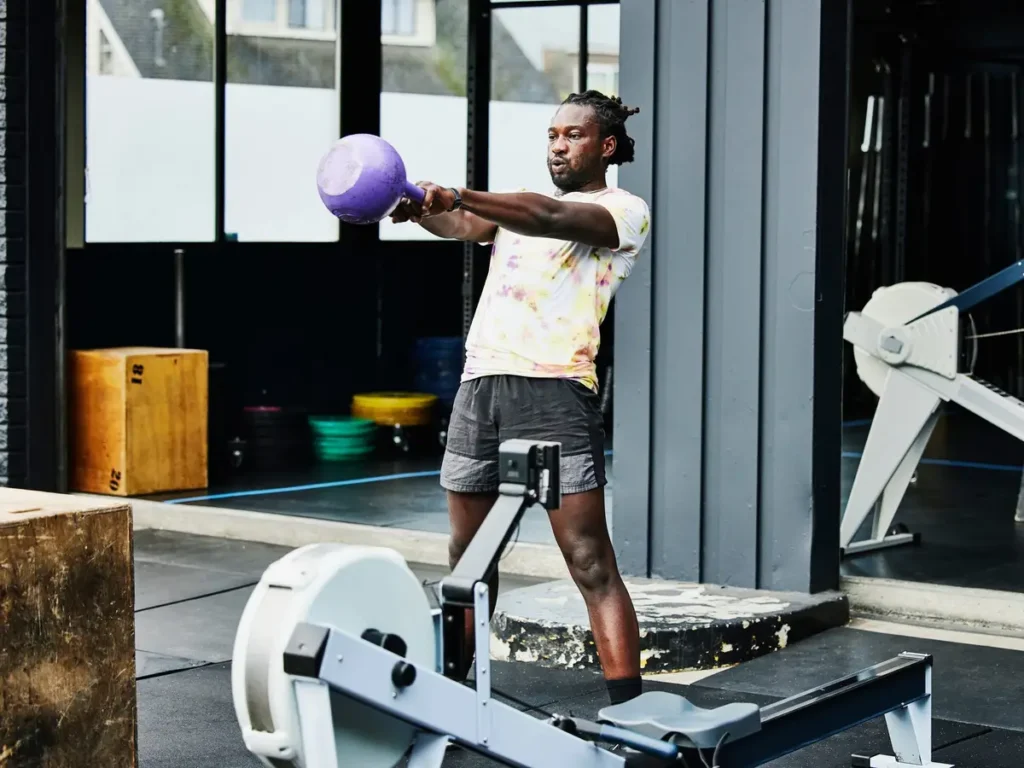Exercise frequency varies by goals, but aim for 150 minutes of moderate-intensity aerobic activity weekly and include strength training on 2 or more days.
In this article, we will explore the recommended frequency of exercise, types of workouts to include, how to personalize your routine, and tips for building a sustainable exercise habit.
Understanding the Recommendations:

General Guidelines:
Health organizations like the Centers for Disease Control and Prevention (CDC) and the World Health Organization (WHO) provide valuable guidelines to help individuals understand the amount and types of exercise necessary for optimal health. The general recommendations for adults are:
- Aerobic Exercise: Strive for a minimum of 150 minutes of moderate-intensity aerobic activity weekly. This can encompass activities like brisk walking, cycling, or swimming.Alternatively, you can opt for 75 minutes of vigorous-intensity aerobic activity, like running or high-intensity interval training (HIIT).
- Muscle-Strengthening Activities: Engage in muscle-strengthening exercises on 2 or more days a week, focusing on all major muscle groups. This includes exercises targeting the legs, hips, back, abdomen, chest, shoulders, and arms.
Tailoring to Your Goals:
While the general recommendations are a great starting point, your specific fitness goals will influence how often you should exercise:
- For Weight Loss: Research suggests that individuals looking to lose weight should aim for 300 minutes of moderate-intensity exercise weekly. This increased duration, combined with strength training, helps create a calorie deficit and supports metabolic health.
- For Muscle Gain: If your goal is to build muscle, focus on strength training 3-5 times per week, ensuring that you include different muscle groups. Allow for adequate recovery time between sessions targeting the same muscles to promote growth and prevent overtraining.
- For Endurance Training: Athletes preparing for events such as marathons or triathlons should gradually increase their training volume to include longer sessions, often exceeding 150 minutes of cardio on multiple days each week.
- For General Health: Following the CDC’s recommendations is generally sufficient for maintaining overall health. Incorporate a mix of cardiovascular, strength, and flexibility exercises to support various aspects of fitness.
Types of Exercise:
A balanced fitness routine should include various types of exercises to target different aspects of health and fitness:
Aerobic (Cardio) Exercises:
Activities that elevate your heart rate, such as:
- Walking: A simple and effective way to start exercising, particularly for beginners.
- Running or Jogging: Provides an excellent cardiovascular workout, helping to improve endurance and burn calories.
- Swimming: A low-impact option that is easy on the joints and great for full-body conditioning.
- Cycling: Can be done outdoors or on stationary bikes, and it improves cardiovascular fitness while being gentler on the joints.
Strength Training:
Essential for muscle and bone health, including:
- Weight Lifting: Using free weights or machines to build strength.
- Bodyweight Exercises: Such as push-ups, squats, and lunges, which can be done anywhere.
- Resistance Bands: A portable and versatile option for strength training.
Flexibility and Stretching:
Activities that enhance flexibility and range of motion, such as:
- Yoga: Improves flexibility, balance, and mental well-being.
- Static Stretching: Can be done post-workout to help with recovery.
Balance Exercises:
Important, especially for older adults, to prevent falls:
- Tai Chi: A gentle form of martial arts focusing on slow, controlled movements and balance.
- Stability Exercises: Such as standing on one leg or using balance boards.
Factors Influencing Exercise Frequency:

Age and Health Status:
- Older Adults: May need to adjust their exercise frequency and intensity based on mobility issues or chronic conditions. Incorporating low-impact exercises, flexibility training, and balance exercises is especially beneficial for maintaining health and preventing injuries.
- Individuals with Chronic Conditions: Those with conditions such as diabetes, heart disease, or arthritis should consult healthcare providers or fitness professionals for personalized exercise recommendations. Tailoring the frequency and type of exercise can help manage symptoms and improve quality of life.
Fitness Level:
- Beginners: If you’re just starting, aim for 2-3 days of exercise per week. Focus on building endurance and strength gradually. It’s crucial to listen to your body and avoid overexertion.
- Intermediate and Advanced Athletes: More experienced individuals might require 5-6 days of training, incorporating higher intensities and varied workouts to avoid plateaus and continue making progress.
Creating a Personalized Exercise Plan:
Developing a personalized exercise plan involves considering your fitness goals, preferences, and lifestyle. Here are several steps to guide you in creating an effective plan:
- Set SMART Goals: Make sure your objectives are Specific, Measurable, Achievable, Relevant, and Time-bound. For instance, instead of simply stating, “I want to get fit,” try setting a more defined goal like, “I will walk for 30 minutes, five days a week, over the next month.”
- Choose Activities You Enjoy: Engaging in activities you love increases adherence to your routine. Experiment with different types of exercise to find what you enjoy most—whether it’s group classes, outdoor activities, or solo workouts.
- Plan Your Workouts: Approach your workouts as if they were important appointments. Set aside specific days and times for exercise to establish consistency. Incorporating both high-intensity and low-intensity sessions throughout the week can keep your routine balanced and enjoyable.
- Track Your Progress: Keep a fitness journal or use apps to monitor your workouts, track progress, and celebrate milestones. This can help maintain motivation and highlight areas for improvement.
- Listen to Your Body: Be mindful of how your body responds to exercise. Rest is vital for recovery, so don’t hesitate to take breaks or modify your workouts if you’re feeling fatigued or sore.
- Incorporate Variety: To prevent boredom and plateauing, mix up your routine with different types of workouts, intensities, and durations. For example, alternate between cardio, strength training, and flexibility sessions throughout the week.
- Seek Professional Guidance: If you’re unsure where to start, consider working with a certified personal trainer who can help create a personalized exercise plan tailored to your goals and fitness level.
Tips for Building a Sustainable Exercise Habit:

- Start Slow: If you’re new to exercise, ease into it gradually to avoid injury. Increase duration and intensity over time as your fitness improves.
- Create a Support System: Find workout partners or join fitness communities to enhance motivation and accountability. Social interactions can make exercise more enjoyable.
- Celebrate Small Wins: Acknowledge your achievements, whether it’s completing a challenging workout, sticking to your routine for a week, or increasing your weights. Celebrating milestones helps maintain your motivation.
- Stay Flexible: Life can be unpredictable, so be ready to adapt your routine. If you miss a workout, don’t be discouraged—just get back on track as soon as you can.
- Incorporate Active Living: Find ways to integrate physical activity into your daily routine. This can include walking or cycling to work, taking the stairs instead of the elevator, or engaging in active hobbies like gardening or dancing.
FAQ’s
1. How many days a week should I exercise for general health?
Aim for at least 150 minutes of moderate-intensity aerobic activity spread over the week, along with strength training on 2 or more days.
2. What if my goal is to lose weight?
For weight loss, aim for 300 minutes of moderate-intensity exercise each week, combined with strength training to support metabolic health.
3. Is it safe to exercise every day?
Yes, but it’s important to vary the intensity and type of workouts. Include rest days and low-impact activities to prevent overtraining.
4. What types of exercises should I include in my routine?
A balanced routine should include aerobic exercises, strength training, flexibility exercises, and balance activities.
5. How do I create a personalized exercise plan?
Set SMART goals, choose activities you enjoy, schedule your workouts, track progress, and listen to your body for adjustments.
Conclusion
In conclusion, establishing a consistent exercise routine is crucial for achieving various health goals, whether for weight loss, muscle gain, or overall well-being. Following the general guidelines of at least 150 minutes of moderate-intensity aerobic activity and strength training on 2 or more days provides a solid foundation. By personalizing your exercise plan, incorporating variety, and listening to your body, you can build a sustainable and enjoyable fitness habit that supports long-term health.